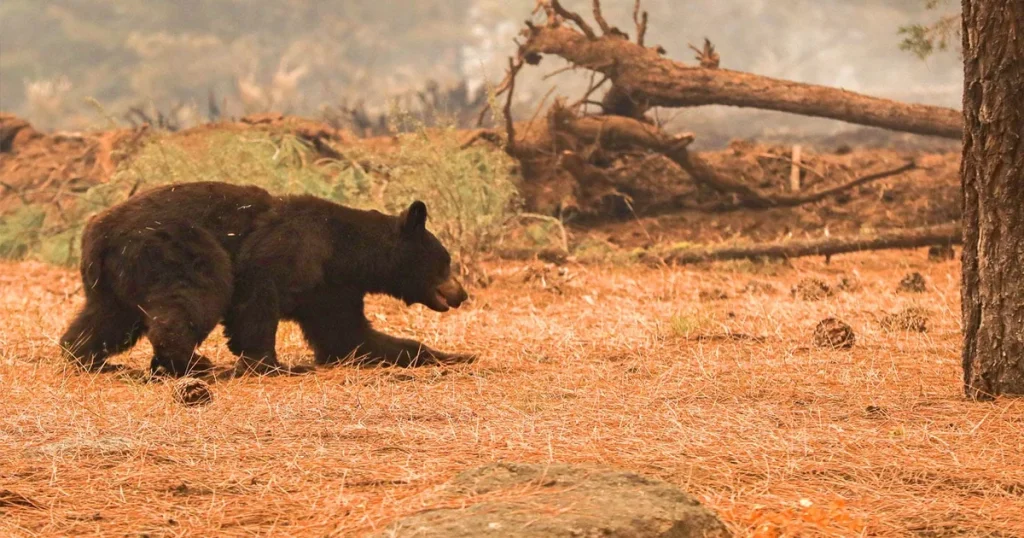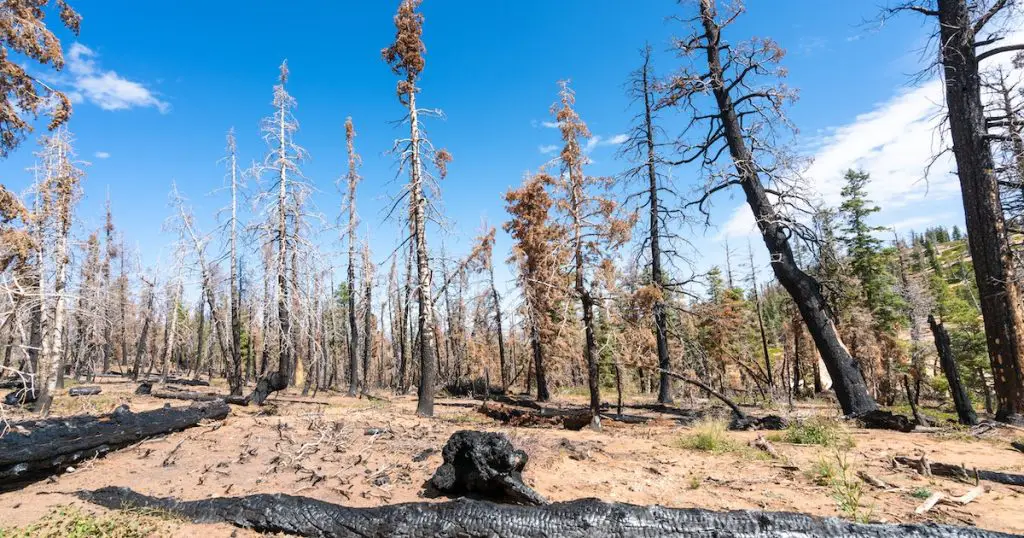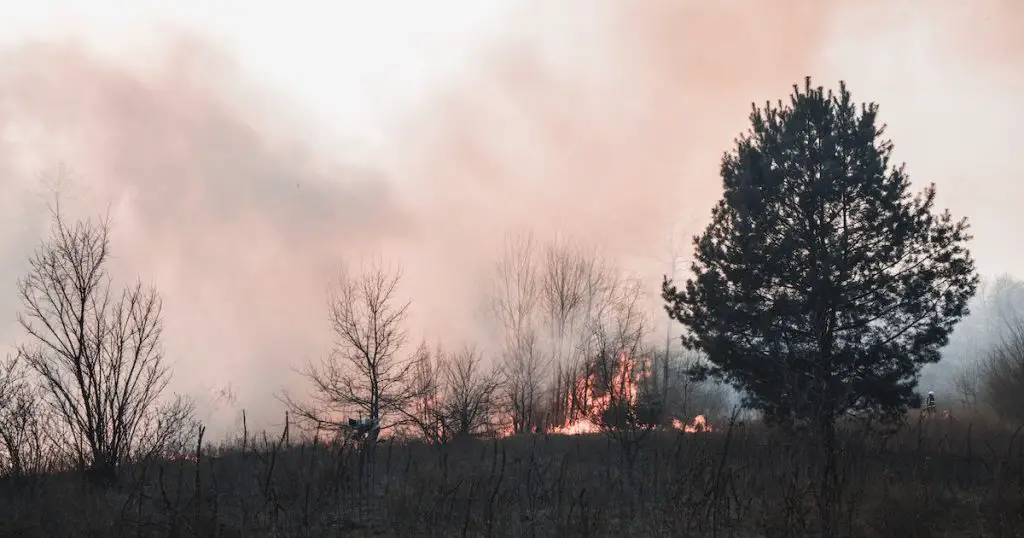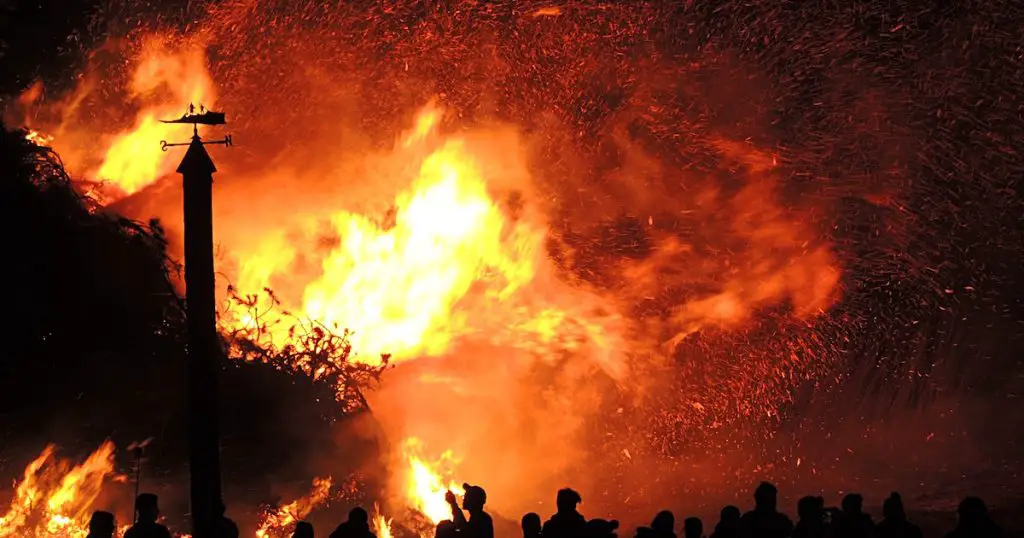Wildfires, often portrayed as raging beasts, are as much a part of natural ecosystems as the rain or sun. Their impacts, especially in regions like Prescott, can be both devastating and rejuvenating. This article will dive deep into the effects of wildfires on Prescott’s unique flora and fauna.

By understanding these impacts, we can better appreciate and protect our environment, while also recognizing the role that such natural disasters play in shaping our ecosystems.
Historical Context of Wildfires in Prescott
The history of wildfires in Prescott is both rich and complex. Many factors have shaped the wildfire patterns in this region, from climate change to human intervention.
Prescott’s position in Arizona makes it particularly vulnerable to wildfires. Historically, the town and its surrounding areas have experienced both large and small-scale fires.
Frequency of Wildfires Over the Years
Over the past few decades, the frequency of wildfires in Prescott has been on the rise. Climate conditions, prolonged droughts, and human activities have all played a role in this increase. The dry conditions, often exacerbated by hotter temperatures, provide the perfect fodder for fires to start and spread rapidly.
Studies from The National Interagency Fire Center have shown that the number of large wildfires has nearly doubled in the past 30 years. This upward trend in frequency poses significant challenges for the conservation of the region’s diverse flora and fauna.
Notable Wildfires and Their Impacts
There have been several significant wildfires in Prescott’s history that have left an indelible mark on its landscape. One such fire was the Doce Fire of 2013, which burned thousands of acres and threatened many homes and wildlife habitats.
Sites like Wildfire Today often provide comprehensive insights into these major fires, helping us understand their scale and repercussions.
Impacts on Flora
Prescott’s wildfires leave an indelible mark on its rich flora. The immediate aftermath sees a charred landscape, with many plants unable to withstand the intense heat. Certain tree species, especially those with thin bark, face significant damage or death, while the underbrush is often completely consumed.
However, some plants, equipped with fire-resistant seeds or rapid regrowth mechanisms, can flourish post-fire, taking advantage of reduced competition. Yet, the overall landscape changes, with some areas taking decades to regain their previous diversity, highlighting the profound and lasting effects of wildfires on plant ecosystems.
Immediate Effects on Plant Life
When wildfires rip through a landscape, the most immediate and evident victims are the plants. They bear the brunt of the flames, suffering extensive damage or complete destruction.

Old-growth trees, those that have been around for decades or even centuries, are especially susceptible. Many of these trees have survived previous wildfires but can succumb to particularly intense blazes.
According to The U.S. Forest Service, these ancient trees play a pivotal role in the ecosystem, offering habitats for numerous species and maintaining soil quality.
While towering trees are often the most noticeable victims of wildfires, the understory vegetation also suffers. These plants, which include shrubs, grasses, and flowering plants, form the primary layer of vegetation in many areas.
A report from Arizona State University highlights how these plants are crucial for preventing soil erosion, offering food for herbivores, and aiding in the recovery post-fire.
Long-term Ecological Consequences
Wildfires don’t just have immediate effects; their impact can be felt for years or even decades after the event.
One of the primary long-term impacts of wildfires on flora is soil degradation. The intense heat can scorch the topsoil, killing off essential microbes and reducing its fertility. This degradation can have ripple effects throughout the ecosystem. Erosion becomes a major concern, especially in areas with slopes.
According to The Environmental Protection Agency (EPA), post-fire erosion can lead to sediment buildup in local waterways, further affecting aquatic life.
Post-fire landscapes can also see a shift in plant succession patterns. Certain species that are fire-resistant or those that quickly colonize after a fire can become dominant, while others might struggle to regain their foothold. Over time, this can lead to significant changes in the local flora, affecting the animals that rely on them for food and shelter.
Impacts on Fauna
Wildfires dramatically reshape the habitats of Prescott’s fauna. Animals, from large mammals to tiny insects, experience immediate threats from the flames and the longer-term challenges of habitat alteration. As food sources become scarce and shelters are destroyed, many are forced to migrate, leading to potential territorial conflicts and increased predation risks.
Additionally, the altered landscape might expose some species to new predators or diseases. The complex dynamics set in motion by wildfires necessitate adaptive behaviors for survival, and they underscore the fragile balance of life in these ecosystems.
Immediate Threats to Animal Populations
While plants are the obvious victims during a wildfire, the animal kingdom isn’t spared either.
As wildfires spread rapidly, they can trap animals in their path. While some species have evolved strategies to escape or survive fires, others aren’t as fortunate.
Small, slow-moving animals or those nesting during the fire season face the highest risk. The Wildlife Society often documents the devastating impacts of wildfires on animal mortality rates.
For the animals that do escape the flames, their challenges are far from over. Loss of habitat can lead to displacement, forcing animals to move to unfamiliar territories. This displacement can lead to competition for resources, increased vulnerability to predators, and even conflict with humans in urban interfaces.
Post-fire Ecological Dynamics
The aftermath of a wildfire presents a new set of challenges and opportunities for the surviving fauna.
With the primary vegetation destroyed, herbivores often find it hard to locate food sources. This scarcity can lead to malnutrition, making them vulnerable to diseases and predators.

Carnivores, on the other hand, might find an abundance of food immediately after the fire due to increased visibility and availability of prey, as noted by The National Park Service.
The altered landscape post-fire can lead to a shift in predator-prey dynamics. Predators might find it easier to hunt in the open, charred lands, while prey species lose their natural camouflage and hiding spots.
Specific Species Affected
Wildfires in Prescott have direct and ripple effects on various species. Many plants, especially those unable to rapidly regenerate, face immediate threats. Animal species, particularly those with specialized habitats, such as the Prescott kangaroo rat, feel the brunt of these fires.
While some birds, like woodpeckers, might find opportunities in post-fire landscapes, others, including ground-nesting species, experience habitat loss. Additionally, reptiles and smaller mammals often face challenges escaping fast-moving fires.
The intricate web of life in Prescott is thus reshaped, with each species navigating its unique challenges and opportunities in a post-wildfire environment.
Iconic Species at Risk
Prescott’s biodiversity is vast, and while all species are affected by wildfires, some face more significant threats than others.
This endangered species, native to Prescott, is severely affected by wildfires. Their habitats, primarily wetlands and streams, are sensitive to post-fire erosion. The scarcity of food and the vulnerability to predators further endanger this already at-risk species.
The Arizona Cypress, a significant tree species in Prescott, has seen a decline due to recurrent wildfires. While these trees have some fire-resistant qualities, repeated blazes weaken them, making them susceptible to diseases and pests.
Surprising Beneficiaries of Wildfires
- Certain fungi: Some fungi species thrive in burnt wood, making post-fire landscapes ideal for them.
- Woodpeckers: These birds are known to prefer burnt trees for nesting, as they provide easy access to insects.
- Pioneer plants: These are the first to colonize after a fire, taking advantage of the reduced competition.
Effects on Aquatic Ecosystems
Wildfires don’t only ravage terrestrial landscapes; their aftermath significantly impacts aquatic ecosystems as well. The loss of vegetative cover leads to increased soil erosion, causing siltation in nearby water bodies.
This influx of ash, sediments, and charred residues alters water chemistry, often leading to challenges like algal blooms and reduced oxygen levels. As a result, aquatic habitats suffer, with many fish and aquatic insect species experiencing disruptions in their life cycles, highlighting the interconnectedness of our ecosystems.
Siltation and Water Quality Concerns
When the protective vegetative cover is burned away by wildfires, it leaves the soil exposed. Rainfall without this vegetative buffer can lead to heightened soil erosion. This runoff carries ash, charred debris, and sediments into local streams, rivers, and lakes.
Increased siltation can smother aquatic habitats, disrupting the life cycles of many aquatic species. Additionally, the charred residues and increased nutrient load can change the water chemistry, potentially leading to algal blooms and decreased oxygen levels, as reported by the U.S. Geological Survey (USGS).
Impact on Freshwater Habitats and Species
The degradation in water quality has cascading effects on freshwater habitats. Many fish species, for instance, rely on clear water for feeding as they are visual predators. Increased turbidity can hinder their ability to locate food, leading to reduced growth rates and overall health. Moreover, critical stages in their life cycle, such as egg incubation, can be disrupted by sediment-laden waters.
Aquatic insects, crucial for the health of freshwater ecosystems and as a food source for many species, can also be affected by the changes in water chemistry and increased sediment loads. Research from The Freshwater Trust elucidates the myriad challenges faced by these organisms in post-wildfire scenarios.
Human-led Interventions and Their Impacts
In response to the devastation caused by wildfires, human-led interventions have emerged as both a preventive measure and a recovery strategy. Techniques such as controlled burns aim to reduce wildfire fuel, while post-fire rehabilitation focuses on restoring damaged ecosystems.
However, these interventions are double-edged; while they can mitigate potential wildfire damage, if not executed carefully, they can also cause unintentional harm. Balancing these approaches, while considering their ecological implications, is vital for the well-being of Prescott’s flora and fauna.
Controlled Burns: Pros and Cons
Controlled or prescribed burns are one of the preventive measures employed to reduce the fuel for potential wildfires. By burning areas under controlled conditions, the accumulation of dry and dead vegetation is reduced. According to the National Wildlife Federation (NWF), these burns can also promote the growth of certain plant species that require fire for their seeds to germinate.
However, while controlled burns have their advantages, they also come with risks. If not managed properly, these fires can become uncontrollable and lead to unintentional damage. Moreover, the smoke from such burns can have health implications for nearby residents.
Rehabilitation Efforts Post-fire
Post-fire landscapes are often the focus of extensive rehabilitation efforts aimed at restoring the ecosystem and preventing further degradation.
Tree planting initiatives are commonly undertaken to restore burnt areas. Trees play a critical role in stabilizing the soil, reducing erosion, and providing habitat for various species. Organizations like American Forests often collaborate with local communities for such reforestation projects.
In the aftermath of wildfires, many animals find themselves without homes or food sources. Rehabilitation centers and wildlife sanctuaries step in to rescue, treat, and release injured animals. They also work towards creating temporary habitats and food stations to support displaced wildlife.
Challenges in Assessing Wildfire Impacts
Assessing the full impact of wildfires on Prescott’s ecosystems is a complex task. The absence of comprehensive historical data on flora and fauna creates a significant hurdle, making it difficult to measure changes accurately.
Furthermore, the intertwining effects of wildfires and broader climate changes present challenges in isolating specific consequences. To gain a clearer understanding, a multi-faceted approach that considers both immediate and long-term effects is essential.
Lack of Historical Baseline Data
One of the significant challenges faced by researchers is the lack of comprehensive historical data on flora and fauna. Without this baseline, assessing changes becomes problematic.

The Nature Conservancy has been working on compiling such data to create a clearer picture of post-fire changes.
Overlapping Effects of Climate Change
The effects of wildfires and those of climate change are often intertwined. Rising temperatures, altered precipitation patterns, and other climate-related changes can magnify the impacts of wildfires.
Distinguishing between the consequences of wildfires and those of broader climatic changes is often challenging.
Future Projections and Concerns
As global temperatures rise and landscapes evolve, Prescott’s ecosystems face an increased threat from wildfires. Predictions suggest a surge in both the frequency and intensity of these fires in the upcoming decades.
The interplay of climatic changes and human activities will shape this future. Proactive strategies, from controlled burns to community education, will be crucial in navigating these challenges, underscoring the need for adaptive conservation efforts to protect our environment.
Predicted Fire Patterns in Coming Decades
Experts predict an uptick in the frequency and intensity of wildfires in the coming years.
The Intergovernmental Panel on Climate Change (IPCC) states that drier conditions, combined with human activities, are likely to create more fire-prone landscapes.
Preparing the Ecosystem for Future Shocks
Prevention and preparation will be key. Strategies like controlled burns, creating firebreaks, and community education will play vital roles in managing future wildfires.
Conservation efforts must also be adaptive, preparing the flora and fauna to better withstand and recover from such events.
Frequently Asked Questions:
In this section, we will be delving into some of the most common inquiries and curiosities that surround our topic.
Why are wildfires becoming more frequent in Prescott?
Wildfires in Prescott are driven by a combination of natural and human-induced factors. Climate change, leading to drier conditions, is a significant contributor. Human activities, such as land development and accidental ignitions, also play a role.
Can the ecosystem recover fully after a major wildfire?
Ecosystems have a remarkable ability to recover, but the time and manner of recovery can vary. Some species might benefit from post-fire conditions, while others might face challenges. Active human-led rehabilitation efforts can accelerate this recovery.
How can the community help in conservation efforts post-wildfires?
Community involvement is crucial. Participating in reforestation projects, supporting local wildlife rehabilitation centers, and educating oneself about fire-safe practices are some ways the community can contribute.
Are there species that actually benefit from wildfires?
Yes, certain species, like some fungi and plants, rely on fire to proliferate. Some animals, such as woodpeckers, also take advantage of post-fire environments. These birds, for example, find it easier to locate their insect prey in the charred remains of trees and use burnt trunks as nesting sites.
Conclusion
Wildfires profoundly influence Prescott’s flora and fauna, reshaping its diverse ecosystems. While some species adapt, others struggle, emphasizing the need for human intervention. Our role is dual: we contribute to both the cause and the solution.
Through understanding, prevention, and committed rehabilitation, we can mitigate these impacts and strive for a harmonious coexistence with nature. Each effort, no matter how small, paves the way for a brighter, sustainable future.



Leave a Comment
You must be logged in to post a comment.